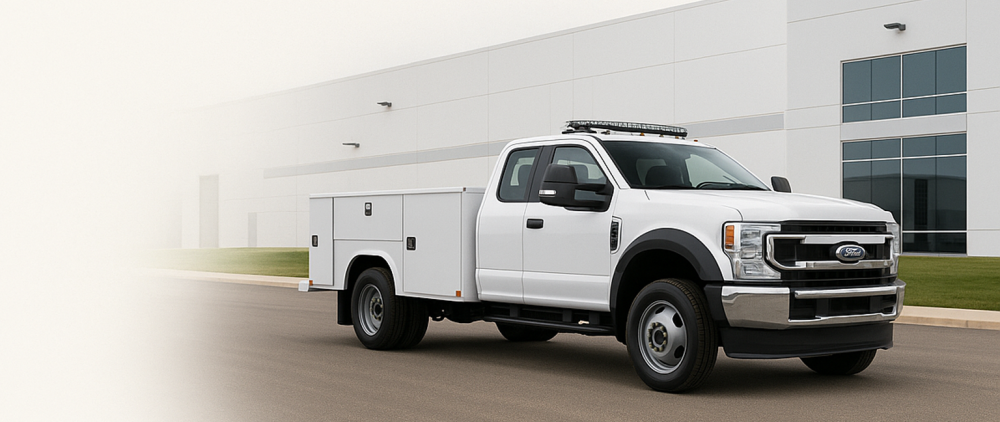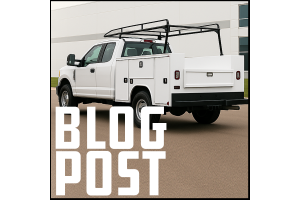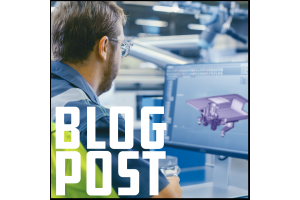

I. Introduction
The North American work truck market is in the midst of a transformation, but it didn’t happen overnight. The seeds of change were planted during the late 2010s and came to full bloom in the wake of the COVID-19 pandemic, when supply chains fractured and fleet buyers suddenly needed vehicles that could be deployed faster, operated by a broader labor pool, and maintained with greater cost certainty.
For decades, the gold standard in utility fleets was the custom-built, heavy-duty rig — an all-steel behemoth that cost six figures and stayed in service for over a decade. OEMs prided themselves on craftsmanship and complexity. But around 2020, a shift began. Construction firms, municipal agencies, and utility fleets started reconsidering their procurement patterns. The big trucks were still impressive, but they were slow to arrive, expensive to staff, and increasingly overbuilt for the jobs at hand.
Then came inflation, interest rate hikes, and a talent crunch in both fleet management and truck operations. Between 2021 and 2023, inflation in the U.S. surged to over 9% at its peak — the highest in more than four decades — pushing up prices for everything from steel to fuel. At the same time, the Federal Reserve raised interest rates from near-zero to over 5% in an effort to cool the economy.
For fleet buyers, even a single percentage point increase in interest rates could add roughly $60 per month to the loan payment on a $115,000 heavy-duty service truck, amounting to more than $3,600 over a 5-year term. Multiply that across a fleet, and the financial strain became unsustainable.
The old model didn’t vanish — but it splintered. While specialized, heavy-duty trucks still serve a vital role in certain fleet operations, buyers are increasingly diversifying their approach. Instead of defaulting to a six-figure custom rig for every need, they’re strategically deploying modular, lighter-duty work trucks alongside them.
These modular trucks can be built in weeks, driven by non-CDL staff, and tailored to specific use cases with bolt-on accessories and smart storage systems. For tasks that don’t require a crane truck or full mechanics rig, a nimble upfitted pickup or van is not just sufficient — it’s smarter, more economical, and easier to staff.
The result isn’t a replacement of the old guard, but an evolution. A single Class 7 truck may still anchor a department, but now it’s flanked by a fleet of Class 3–5 workhorses, each configured for application, versatility, and cost control.
Today’s work trucks are getting smarter — lighter, faster to deploy, and built for adaptability. That shift has put new pressure on OEM service body manufacturers to rethink their approach. It’s no longer enough to offer great craftsmanship on a handful of bespoke builds. The future belongs to scalable, modular designs that align with buyer expectations for flexibility, speed, and cost efficiency.
This isn’t just about chassis. It’s about the full build strategy — from the truck frame to the last latch on the last compartment door. If you’re an OEM still treating access hardware as an afterthought, the time to pivot is here.
II. The Shift Toward Modular Upfits — What’s Driving It?
Fleet Economics
Modular work trucks offer a financial lifeline to cost-conscious buyers. High interest rates have made financing large, custom Class 7–8 trucks increasingly difficult. Meanwhile, a modular upfit on a lighter-duty platform — say a Class 5 chassis like the Ford F-550 — can deliver comparable jobsite utility for a fraction of the cost.
Fleet buyers are also sidestepping another major expense: commercial driver’s license (CDL) requirements. Trucks under the 26,000 lb GVW threshold can be operated by a broader range of employees, helping companies navigate the ongoing shortage of qualified CDL drivers.
Who’s Driving Demand?
Behind this modular shift are pragmatic, high-pressure buyers who need dependable trucks — and need them now.
-
-
- Fleet Managers (Construction, Trades): These buyers need agile, job-ready vehicles to carry tools and parts to dispersed job sites. They favor versatility, repeatability, and cost-effectiveness.
- Public Works Supervisors: Managing municipal fleets on tight budgets, they prefer standardized trucks that reduce training time, simplify maintenance, and stretch public dollars.
- Utility and Telecom Operators: With crews working in urban and remote zones, these buyers need reliable, CDL-free trucks that are secure, mobile, and serviceable.
- Industrial Maintenance Leads: Serving mining, oil, and gas sites, they prioritize rugged, field-ready upfits that can withstand harsh conditions and still deliver ROI.
- Logistics and Service Fleet Managers: Mobile repair trucks are now a must for fleet uptime — these buyers need quick-to-upfit, compact trucks that act as mobile workshops.
-
These are not show truck buyers. They’re volume buyers. Repeat buyers. Operational buyers. And they want a modular, scalable work truck that gets the job done efficiently.
Speed-to-Deployment
Another key reason modular builds are winning? Time. Custom builds can take months to design, fabricate, and deliver. In contrast, modular bodies and plug-and-play electrical systems can be mounted to stock chassis in weeks. In a climate where every day a truck isn’t on the road is lost revenue, speed wins.
Design Versatility
Today’s modular platforms are engineered for flexibility. A single chassis can support multiple body configurations, enabling fleet managers to right-size their purchases. Whether it’s tool compartments, ladder racks, light cranes, or integrated shelving — modular systems provide a repeatable way to serve diverse jobs without starting from scratch each time.
That versatility is key in industries with evolving needs, like utilities, logistics, and public works. One truck design that can be reconfigured across different departments or service types offers economies of scale and operational simplicity that custom-built simply can’t match.
III. Impact on Traditional Body Manufacturing
The shift to modular upfits is more than a product trend — it reflects a major shift in manufacturing priorities. Upfitting itself isn’t new; fleets have relied on customized utility bodies for decades. What’s changed is the scale and growth trajectory. As orders for modular upfit units rise and demand for traditional custom-built OEM bodies softens, many OEM manufacturers are pivoting — retooling their operations to produce more modular service bodies instead of low-volume custom units. In essence, OEMs aren’t abandoning body manufacturing; they’re adapting it to meet a new reality of scale, speed, and repeatability.
Lead Times & Custom Build Fatigue
Custom fabrication is slow. It requires engineering hours, skilled labor, and often suffers from long lead times for specialty components. When supply chains tightened, these challenges compounded, making bespoke builds untenable for buyers with short deployment windows.
Modular bodies, on the other hand, can be manufactured in volume, stocked in inventory, and mounted quickly. That shift has changed customer expectations: they no longer want to wait 6–9 months for a build. They expect delivery in weeks, and they’re choosing OEMs who can meet that demand.
Economics of Scale
OEMs that historically produced low volumes of high-complexity bodies are finding it harder to compete on cost. Modular platforms allow for repeatable design, shared components, and lean manufacturing principles. The result? Lower per-unit costs, higher margin potential, and the ability to serve broader markets.
Operational Shift
To succeed in this new environment, OEMs must retool their operations. That includes:
-
-
- Investing in flexible assembly lines
- Stocking standardized subassemblies
- Streamlining body-chassis integration
-
Manufacturers must think like systems integrators, not just body builders. The future is fast, repeatable, and responsive to buyer demand.
IV. What Leading OEMs Are Doing to Stay Ahead
Some OEMs have already adopted this shift, and their actions provide a blueprint for others.
Capacity & Facility Expansion
Summit Truck Bodies recently broke ground on a $50M facility to double production capacity, citing demand for modular bodies as the key driver. Others, like Zoresco and Wabash, are opening new install centers in high-growth regions to get closer to fleet buyers.
This geographic proximity, paired with expanded manufacturing, allows for faster turnaround and better responsiveness.
Turnkey Sales Model
The best OEMs aren’t just selling bodies — they’re offering full solutions. By partnering with upfitters and dealership networks, they’ve created one-stop ordering for chassis and bodies. A buyer can spec, finance, and take delivery of a ready-to-work truck in a single transaction.
Product Diversification
Aluminum and composite body lines are gaining traction thanks to their weight savings, corrosion resistance, and compatibility with lightweight chassis. Some OEMs are even building pre-configured “fleet spec” units — common layouts that can be stocked and sold like inventory.
Standardization & Modularity
Platforms are being designed around repeatability. That means shared wiring harnesses, common compartment sizes, and body systems that can scale across different industries.
These investments are paying off — in market share, customer loyalty, and production agility.
 |
V. Engineering Implications — The Hardware Factor
Component decisions matter more than ever in a modular environment. The trend isn’t just about building more trucks — it’s about how those trucks are assembled, outfitted, and supported in the field. Ten years ago, access hardware might have been considered a commodity — a set of parts purchased late in the process. But in the current climate, hardware selection has become a strategic design decision that impacts everything from production scalability to technician productivity.
Consider this: when a fleet moves from ten heavy-duty rigs with eight compartments each to fifteen light-duty modular trucks with the same number of compartments, the demand for handles, latches, struts, and seals jumps by 50%. Now multiply that shift across hundreds of fleets making the same choice, and the ripple effect through the supply chain becomes impossible to ignore.
Body manufacturers who once treated hardware as a bill-of-materials footnote are now reevaluating how these components support modular design goals — standardization, durability, ease of installation, and smart-system compatibility. In short, the smallest parts are carrying a larger load in the modular era.
Component Volume Surge
With more trucks being built — and more compartments per truck — demand for latches, handles, hinges, and gas struts has exploded. A single fleet order might include hundreds or thousands of hardware components.
Material Evolution
As aluminum and composite bodies grow in market share, corrosion-resistant hardware becomes non-negotiable. Stainless steel latches, synthetic bushings, and sealed rotary locks are essential to avoid galvanic corrosion and maintain durability in the field.
Smart & Secure Access Systems
Security is top of mind. Fleets are storing more valuable tools onboard and want to protect them. OEMs are increasingly integrating smart locks, centralized locking systems, and remote-access capabilities into body designs.
Some systems are even telematics-ready, providing alerts if a compartment is left open or accessed after hours.
Operator Ergonomics
These trucks are used all day, every day. Hardware must be intuitive, ergonomic, and durable. Features like automotive-style slam latches, gas strut door holders, and one-handed operation improve efficiency and technician safety.
Supply Chain Readiness
None of this works without reliable hardware suppliers. OEMs need partners who can scale production, deliver on tight timelines, and support design innovation. The days of one-off latch sourcing are over — smart OEMs are aligning hardware strategy with their build strategy.
VI. Call to Action: Is Your Component Strategy Keeping Up?
As an OEM, you’re investing in modularity, scalability, and operational efficiency. But are you applying the same principles to your component sourcing?
Your access hardware strategy needs to evolve in lockstep with your body designs. The latches, locks, and hinges you choose can either enhance or hinder your platform’s performance and profitability.
Ask yourself:
-
-
- Are we using the same hardware across multiple builds?
- Are our components optimized for aluminum or composite bodies?
- Are our latches ergonomic and jobsite-ready?
- Do we offer security and smart lock options?
-
If the answer isn’t a confident “yes” across the board, it may be time to rethink. Partner with suppliers who understand the demands of modern modular platforms. Look for hardware solutions that are scalable, field-tested, and ready to go to work. Because your buyers are evolving — and they expect every detail of the truck to keep up.
VII. Conclusion
The modular revolution in work trucks is well underway. Driven by economic realities, labor shifts, and rising buyer expectations, it has forced a complete rethinking of how service bodies are designed, built, and deployed.
OEMs that respond with flexible, scalable build strategies — including smart access hardware systems — will lead the next generation of fleet solutions.
The work truck is getting smarter. Isn’t it time your build strategy did too?







